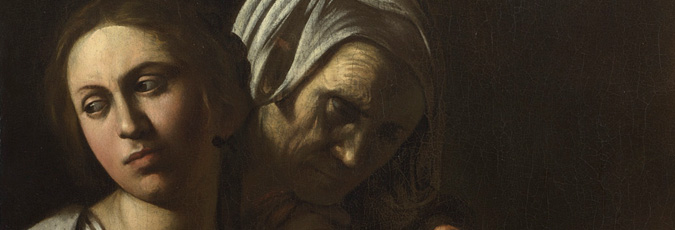Caravaggio's immediate circle
In 1599 Caravaggio received his first public commission – to paint the 'Calling of Saint Matthew’ and ‘Martyrdom of St Matthew’ (1599–1600) in the Contarelli chapel in San Luigi dei Francesi, Rome. The public unveiling of these works a year later caused a sensation and led to Caravaggio’s instant fame. He quickly won the favour and protection of wealthy and distinguished patrons including the Roman nobleman Ciriaco Mattei (1542–1614) who commissioned both The Supper at Emmaus and ‘The Taking of Christ’ (1602), brought together again in the exhibition.
Caravaggio’s work earned the admiration of artists too. The younger generation of painters, in particular, heralded Caravaggio as the only true imitator of nature and many soon adopted his methods. Among them, Bartolomeo Manfredi (1582–1622) played an important role in the dissemination of Caravaggism and the propagation of the everyday subjects that Caravaggio had made popular.
The artists Giovanni Baglione (1566–1643) and Orazio Gentileschi both knew Caravaggio personally. Baglione was one of the first to emulate Caravaggio but the two artists soon became rivals, culminating in a bitter court battle in 1603. Gentileschi, giving evidence at the trial, claimed to have lent Caravaggio a Capuchin robe and a pair of wings – presumably as props for his pictures – which suggests they knew each other well.

